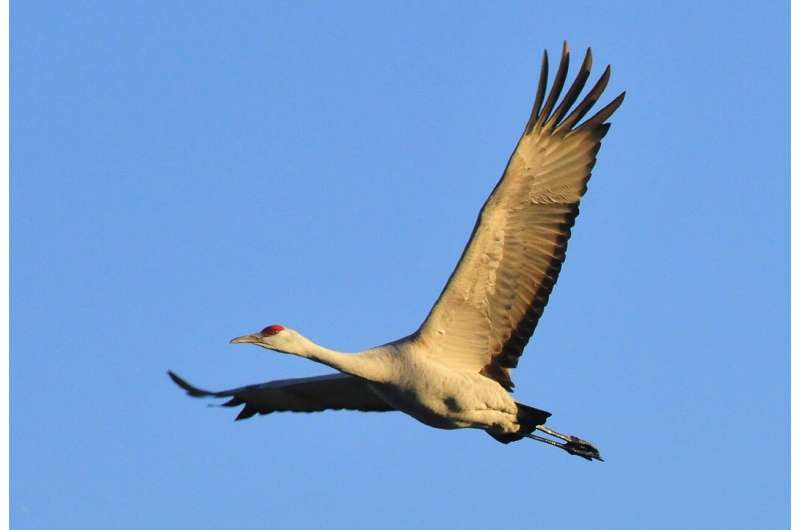Credit: Pixabay/CC0 Public Domain
Strange things often wash up on North Carolina's Outer Banks, and the National Park Service says the latest example is a big, prehistoric-looking bird that is far outside its natural range.
Cape Hatteras National Seashore says a sandhill crane has been seen roaming the grounds of Bodie Island Lighthouse.
"These birds migrate from Florida and Texas to the Western United States and are typically not seen in this area," the park reported in a Facebook post on July 13.
"Sandhill Cranes are one of the largest cranes in North America ... They stand between three and four feet tall with a wingspan of more than six feet!"
A photo of the long-legged bird accompanied the post, which inspired others to report they saw it, too.
Explaining the odd creature's presence could well be a preemptive move by the National Park Service.
Out-of-place sandhill cranes—with their large bodies, skeletal legs and distinctive red brows—have been cited as a possible source for West Virginia's popular mothman monster legend. (They're not native to West Virginia, either.)
Witnesses have described the mothman "as a huge gray-winged creature with large red eyes," according to The Mothman Wiki. "Somebody who has never seen anything like (a sandhill crane) before could easily get the impression it is a flying man," the site reports.
Commenters on the park's Facebook post say the crane was big, loud and "mean as heck." Some suggested it had been "blown off course" by recent storms and ended up in the park.
"It is 2020 I'm not surprised, we will see unicorns soon," Marcia Woodford posted in response to the park's photo.
Sandhill cranes nest in the Northern U.S., Canada and even Siberia and then migrate for winter to Mexico, Texas and Florida, according to All About Birds.
They are an ancient species, prone to some truly odd behavior, National Geographic reports.
"A fossil from the Miocene Epoch, some ten million years ago, was found to be structurally the same as the modern sandhill crane," National Geographic says. "Cranes also dance, run, leap high in the air and otherwise cavort around—not only during mating but all year long."
©2020 The Charlotte Observer (Charlotte, N.C.)
Distributed by Tribune Content Agency, LLC.























